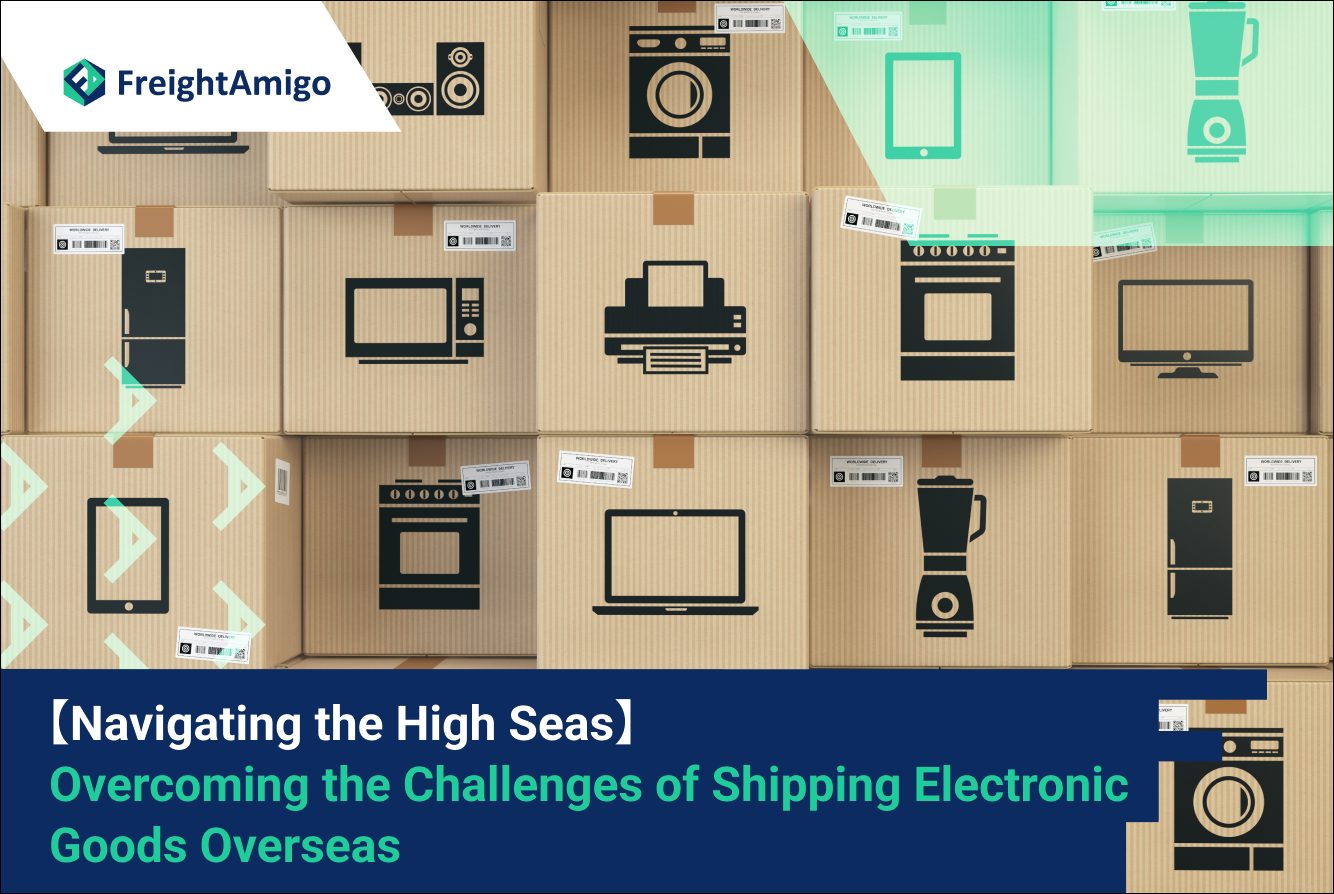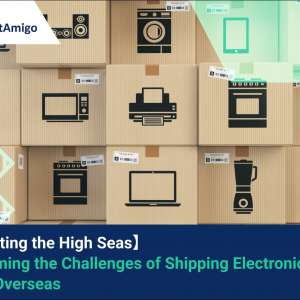Author Name: Tiffany Lee – Marketing Analyst at FreightAmigo
The semiconductor industry has experienced significant growth and transformation in recent years, with countries like the United States, China, and Germany emerging as key players in this global market. This article provides a comprehensive overview of the semiconductor industry, exploring its import market, logistic challenges, and the evolving landscape of this dynamic sector.
Want To Compare The Best Express, Air Freight, Sea Freight, Rail Freight & Trucking Rates So As To Have Better Control On Cost?
Semiconductor Imports: An Overview
The global semiconductor market has witnessed substantial growth, with the United States emerging as a major importer of semiconductor products. As per recent data, the U.S. semiconductor industry has captured nearly 48% of the global market share, solidifying its position as a leading provider of semiconductors worldwide. The import statistics for semiconductors in the United States reveal a steady increase in the value of imports, with a significant portion originating from countries like China, Vietnam, and Malaysia.
The United States has witnessed a shift in its semiconductor trade patterns, with China and Vietnam emerging as crucial import partners. These countries have become key players in the global semiconductor supply chain, contributing to the overall growth of the industry. The rise in imports from these countries is reflective of the changing dynamics of the semiconductor market, as more companies turn to international trade to meet their growing demands.
Logistic Challenges in Semiconductor Import
As the semiconductor industry continues to expand, it faces various logistic challenges that need to be addressed to ensure efficient supply chain management. The transportation and delivery of semiconductor products require careful planning and execution to avoid disruptions and delays.
One of the primary logistic challenges in semiconductor import is the safe and secure transportation of delicate wafers, a critical component of semiconductor manufacturing. Wafers are highly sensitive to temperature variations, vibrations, and physical damage, making their transportation a delicate process. Logistic providers need to implement specialized packaging, handling, and tracking techniques to ensure the integrity of these wafers throughout the import process.
Moreover, given the global nature of semiconductor trade, efficient customs clearance processes and streamlined documentation play a vital role in minimizing delays and ensuring smooth logistics operations. Logistic providers need to collaborate closely with customs authorities to navigate complex import regulations and expedite the clearance of semiconductor shipments. Implementing advanced track-and-trace technologies, such as blockchain, can further enhance transparency and traceability in the logistic process, enabling real-time monitoring of shipments and reducing the risk of loss or theft.
The Importance of Semiconductor Logistics
Efficient logistics is crucial for the semiconductor industry as it directly impacts the overall productivity, profitability, and competitiveness of companies operating in this sector. With the increasing complexity and global reach of semiconductor supply chains, companies need reliable logistics partners that can offer tailored solutions to meet their unique requirements.
Logistic providers play a critical role in managing the entire import process, from customs clearance to transportation and delivery. By leveraging their expertise and extensive network, they ensure that semiconductor products are transported safely and efficiently, minimizing the risk of damage or delays. This enables semiconductor companies to focus on their core competencies, such as research and development, manufacturing, and innovation, while leaving the logistics aspects to the experts.
Furthermore, logistic providers can offer value-added services, such as warehousing and inventory management, to optimize supply chain operations and reduce costs. By strategically locating warehouses in key semiconductor hubs, they can provide just-in-time delivery, ensuring that semiconductor products reach their destination promptly and in optimal condition.
Innovation and Collaboration in the Semiconductor Industry
The semiconductor industry thrives on innovation and collaboration, driving advancements in technology and shaping the future of various sectors. As the demand for semiconductor products continues to grow, companies are investing heavily in research and development to stay competitive in the market.
The United States, being a leader in the semiconductor industry, allocates a significant portion of its revenue towards research and development activities. On average, the industry invests around one-fifth of its revenue in R&D, reflecting its commitment to innovation and technological advancements. This continuous investment in R&D allows companies to develop cutting-edge semiconductor technologies, fueling growth and driving the industry forward.
Collaboration is also a key aspect of the semiconductor industry, with companies forming strategic partnerships to leverage each other’s strengths and capabilities. These collaborations can range from joint research projects to manufacturing and distribution agreements, enabling companies to access new markets, expand their product offerings, and enhance their competitive position. Such collaborative efforts foster knowledge exchange and drive innovation, propelling the semiconductor industry towards new horizons.
Addressing the Logistic Challenges: Cutting-Edge Solutions
To overcome the logistic challenges faced by the semiconductor industry, innovative solutions are being developed and implemented. These solutions leverage technology and advanced techniques to ensure efficient and secure transportation of semiconductor products.
One significant development in semiconductor logistics is the use of specialized packaging and handling techniques to protect delicate wafers during transportation. Advanced materials and designs are employed to shield wafers from external factors, such as temperature fluctuations and physical impact, reducing the risk of damage and ensuring their integrity upon arrival. Additionally, real-time monitoring systems are utilized to track the condition and location of semiconductor shipments, allowing for immediate intervention in case of any deviations from the optimal conditions.
Digitalization and automation also play a crucial role in streamlining semiconductor logistics. By employing state-of-the-art software systems and artificial intelligence algorithms, logistic providers can optimize route planning, minimize delivery times, and enhance overall supply chain efficiency. These technologies enable real-time data analysis and decision-making, facilitating proactive measures to address potential bottlenecks or disruptions in the logistics process.
Moreover, the implementation of blockchain technology in semiconductor logistics can enhance transparency, security, and traceability. Blockchain-powered platforms enable secure data sharing and immutability, reducing the risk of fraud and ensuring the integrity of transaction records. This can significantly benefit the semiconductor industry, as it enables seamless collaboration and trust between various stakeholders across the supply chain.
Conclusion
The semiconductor industry continues to grow and evolve, driven by increasing global demand and technological advancements. As companies expand their operations and engage in international trade, efficient logistics becomes paramount to ensure the smooth flow of semiconductor products across borders. By addressing logistic challenges through innovation and collaboration, the industry can overcome obstacles and unlock new opportunities for growth.
Semiconductor import, with its intricate logistic requirements and delicate nature of products like wafers, demands specialized expertise and tailored solutions. Logistic providers play a crucial role in enabling efficient supply chain management and ensuring that semiconductor products reach their destination safely and on time. By leveraging technology, advanced packaging techniques, and collaborative partnerships, the semiconductor industry can navigate the complexities of global trade and maintain its position as a key player in the global market.
As the semiconductor industry continues to evolve, logistics will remain a critical factor in its success. By embracing innovation and staying abreast of emerging technologies, companies can optimize their supply chains and adapt to the changing dynamics of the global semiconductor market. With effective logistics solutions in place, the semiconductor industry can continue to drive innovation, fuel economic growth, and shape the future of various sectors worldwide.
There Are Different Options For Cargo Transportation. If You Want To Choose The Most Convenient And Suitable Solution, It Is Best To Have The Full Support Of Logistics Experts! If You Are Planning To Ship Goods Overseas, Please Go To The FreightAmigo Page For Inquiries.
===
Read More:
【Cosmetic Product Recycling】 A Guide to Sustainable Reverse Logistics
【Rise of Green Supply Chain】 Pioneering Sustainable Practices in Logistics
【ESG in Logistics】 How ESG Practices Drive Social Responsibility in Logistics
===
If you have any inquiries on logistics/supply chain, feel free to contact FreightAmigo now:
Chat with us online OR
Phone : +852 28121686
WhatsApp: +852 27467829










































